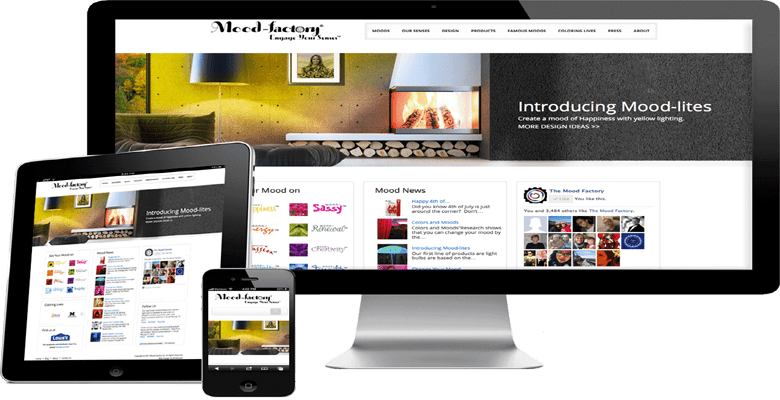
Web design is a Web development process for creating a website that focuses on aesthetic factors like layout, user interface and other visual imagery in order to make the website more visually appealing and easy to use. Web design makes use of various programs and tools in order to achieve the intended look, such as Dreamweaver, Photoshop and many others. In order to create a winning design, Web designers need to think about their audience, the purpose of the website and the visual appeal of the design.
The web design portion is the graphical part of the website development. Our Graphic artists and designers work together to come up with ideas and different concepts based on the customer’s specific requests and our own marketing research is here to guarantee the success of our client’s website. Once the website design is done our web developer team will complete the coding portion of the site.
Every website design begins with an idea. Our web design team is extremely creative, most of our clients come to us with no idea of what they want their websites to looks like, this is where we work for our clients. In such cases, we come up with the winning combination for your business. We want your experience to be smooth and stress-free, we are here to do the work for you.
Most websites are created by using a coded language called Hypertext Markup Language (HTML). In order for a website to be successfully displayed on the client browser, it needs to follow the rules of this language. HTML tags identify the website’s content for every page. Cascading Style Sheets (CSS) is then used to define the overall visual appearance of each page. The result is based on the combination of these elements. Hand coding can be taxing for some designers so some opt to use programs like Adobe Dreamweaver.
Web design refers to the design of websites that are displayed on the internet. It usually refers to the user experience aspects of website development rather than software development. Web design used to be focused on designing websites for desktop browsers; however, since the mid-2010s, design for mobile and tablet browsers has become ever-increasingly important.
A web designer works on the appearance, layout, and, in some cases, content of a website. Appearance, for instance, relates to the colors, font, and images used. Layout refers to howinformation is structured and categorized. A good web design is easy to use, aesthetically pleasing, and suits the user group and brand of the website. Many webpages are designed with a focus on simplicity, so that no extraneous information and functionality that might distract or confuse users appears. As the keystone of a web designer’s output is a site that wins and fosters the trust of the target audience, removing as many potential points of user frustration as possible is a critical consideration.
Two of the most common methods for designing websites that work well both on desktop and mobile are responsive and adaptive design. In responsive design, content moves dynamicallydepending on screen size; in adaptive design, the website content is fixed in layout sizes that match common screen sizes. Preserving a layout that is as consistent as possible between devices is crucial to maintaining user trust and engagement. As responsive design can present difficulties in this regard, designers must be careful in relinquishing control of how their work will appear. If they are responsible for the content as well, while they may need to broaden their skillset, they will enjoy having the advantage of full control of they finished product.
